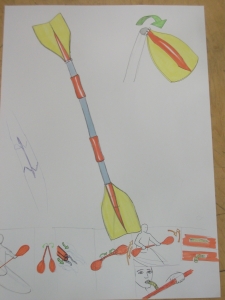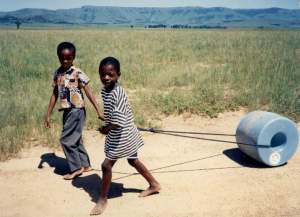I found Sam Russell’s talk this week to be very interesting, intuitive and informing. He comes across as a well-spoken young lad who looks like he is straight out of college. However, he has already led a remarkable design life in terms of his skill, his determination, range of ideas and his willingness to travel and get into new cultures. I really liked that about him.
Some of the projects he took on were very appealing. For his Final Year Project (FYP) Sam decided to re-design the common ski chair-lift. His re-imagining was far more sleek, more smooth and definitely had a lot of effort and research put into it. Unfortunately I have no photographs of the model for this blog but I can tell you it was a really nice model, well executed and very modern. I think it’s completely necessary to put in the amount of time he puts in, the extra hours, the late nights as well as all the cognitive research.
Another project Sam took on was a water-carrying device. This is where Sam, to me, became a bit more interesting in his approach. Mainly focused on the sub-Saharan deserts and plains of Africa, this project was aimed at a completely different demographic that his ski lift FYP. One of the things Sam talked about was branching out and trying new things. Anyways, his water-carrier was a simple idea, drawing on the elemental design of the wheel as well as user information, user problems and user suggestions. It’s clear to see that Sam is very user-orientated and it’s really good to see someone take on the problems at the core.
Design for society and design for sustainable usability were some more key aspects to Sam’s design thinking. Don’t just make something, throw it out there and hope for the best. He was adamant about going to the heart of the problem, immersing himself in the culture, getting to know the people, his users and understand what their problems are. This allows him to take in all details that can arise like sustainability and re-use in a society. The product that is designed may not be used by the locals for its intended purpose. This research and design thinking was epitomised in the life-jacket project Sam took on for 12 months.
Quick back-story: In Uganda several thousand fishermen die each year. It is down to mis-information on the risks of working with water, not being educated enough, not using the health precautions and facilities already in place and not being able to swim. Through many iterations and many prototypes, he tried design after design until he found a suitable solution. But throughout the process Sam was practicing what he was preaching. He immersed himself in the fishing habitat, learned everything he needed to know, talked to the locals, went fishing with the locals, had local craftsmen and women help in his designs and his prototyping tryouts. The feedback gained was immeasurable and invaluable.
He gained insight into how products are actually used in these areas, and why people don’t use them properly. His design was easy to use, had very little straps to work with, the instructions were images so as to avoid the multiple language barriers and the locals were very encouraged to use it. But most importantly, for design sustainability, the internal material that gave the life jacket its buoyancy could be removed and used in the fishing trade. If the jacket was broken, or not needed, fishermen could simply cut it open and use the contents for another purpose, as well as using the material itself for other purposes.
That is probably the biggest lesson I learned from Sam; design for sustainability and re-use. We have to fully understand the user and the environment, and design to meet the real needs therein.

Our Project - Renewable Water Source - Kayakers and rowers collect water in paddle, use of paddle filters the water, open and drink
Leave a comment
No comments yet.









Leave a comment